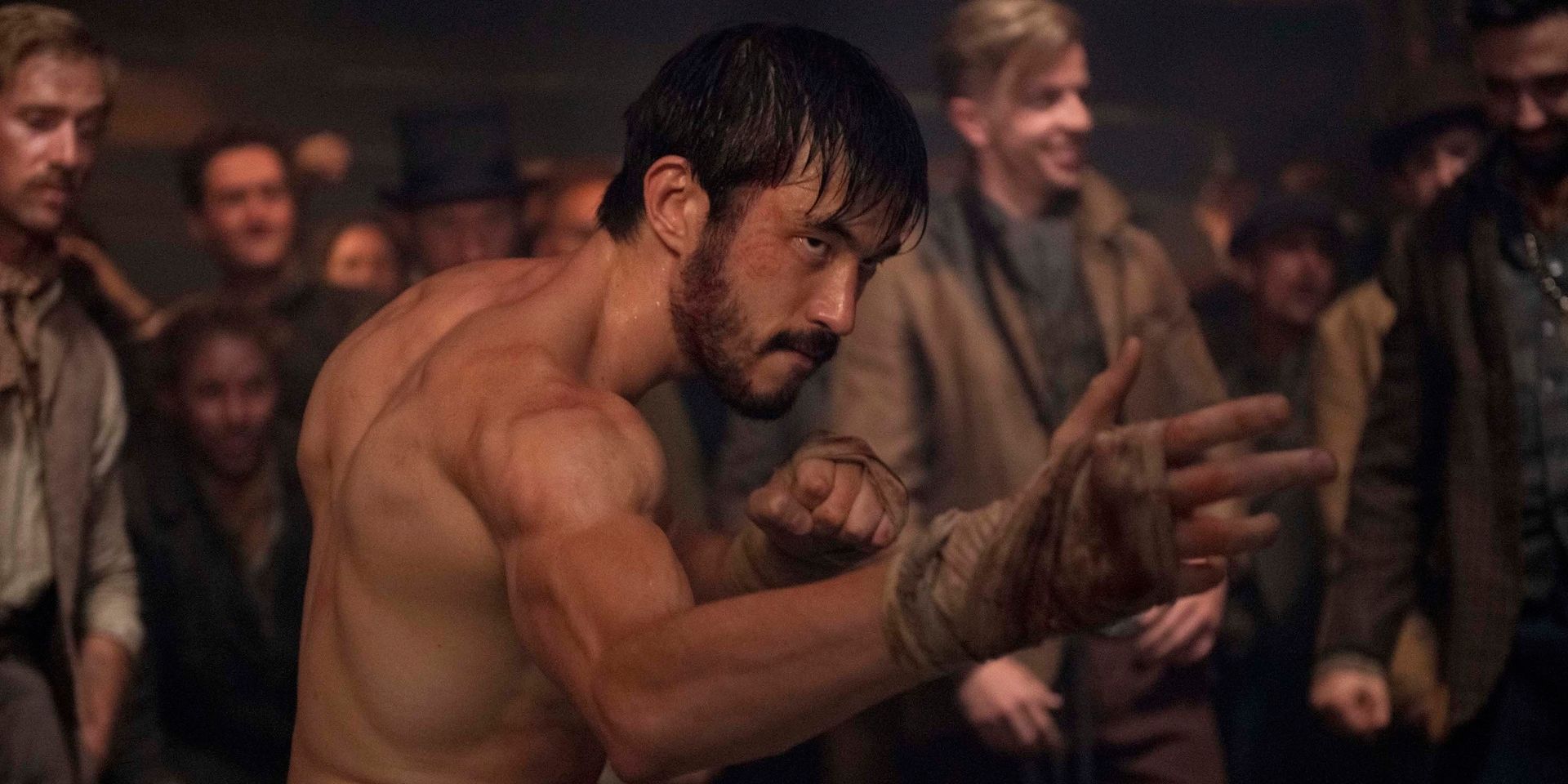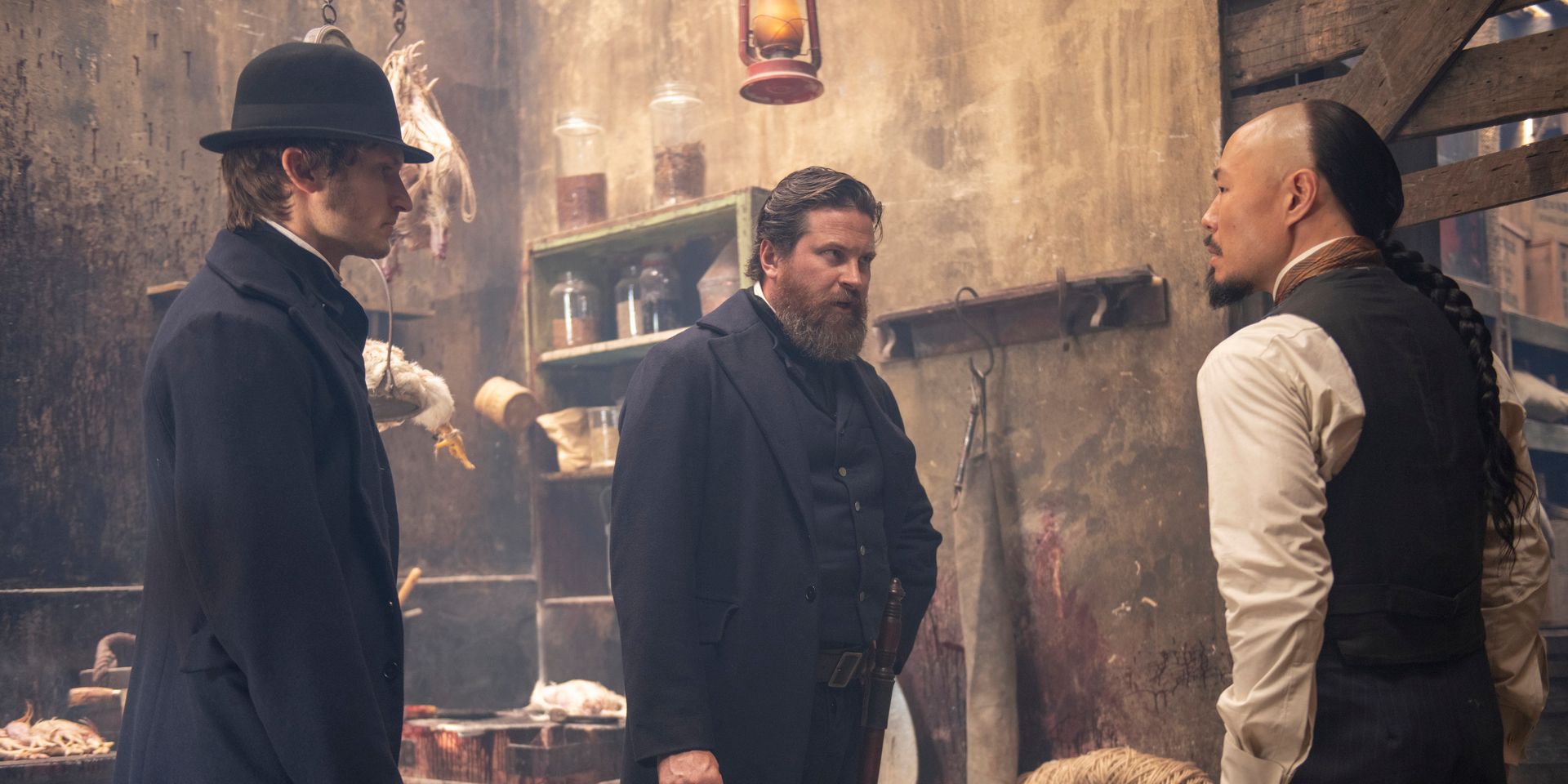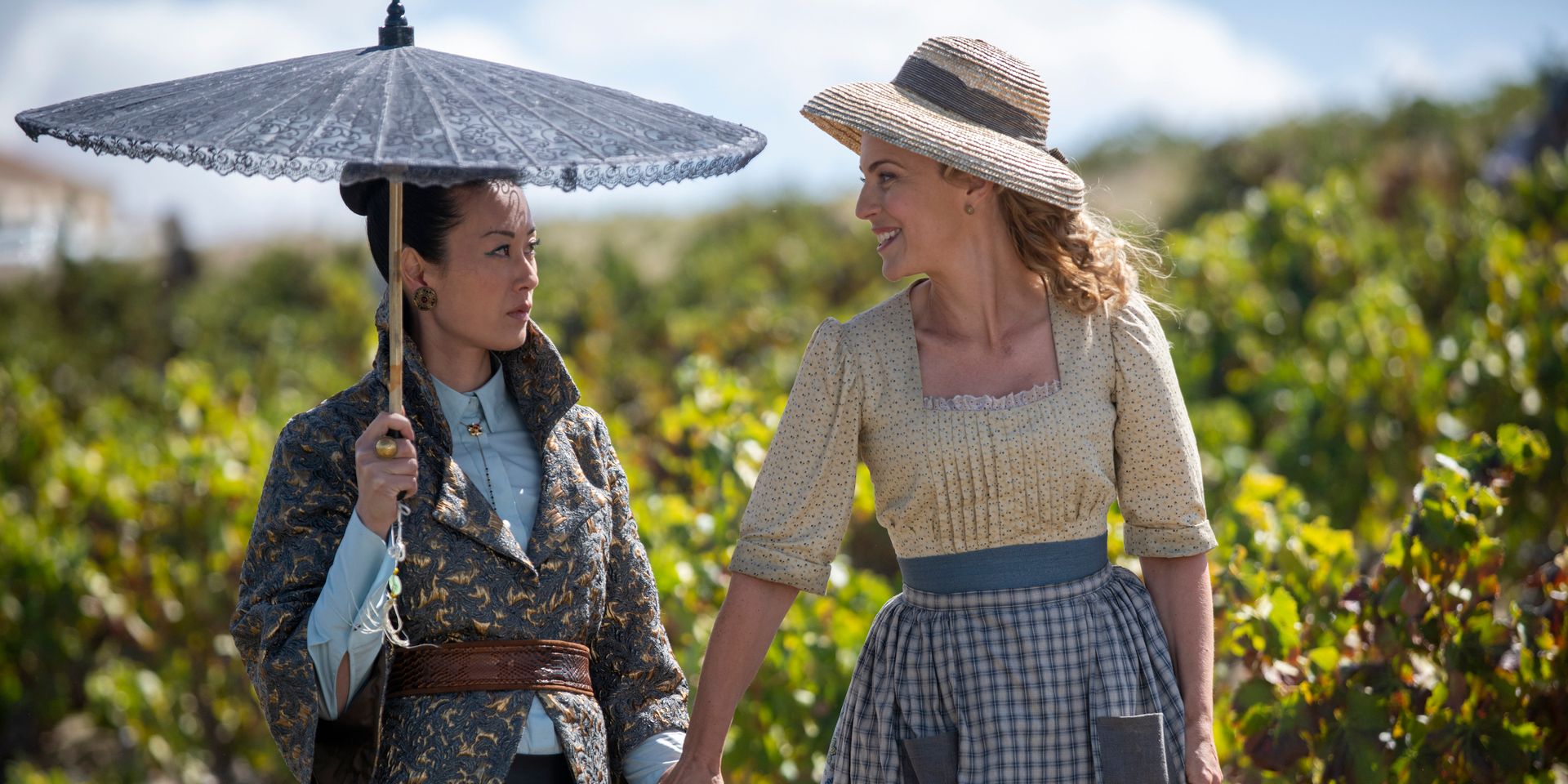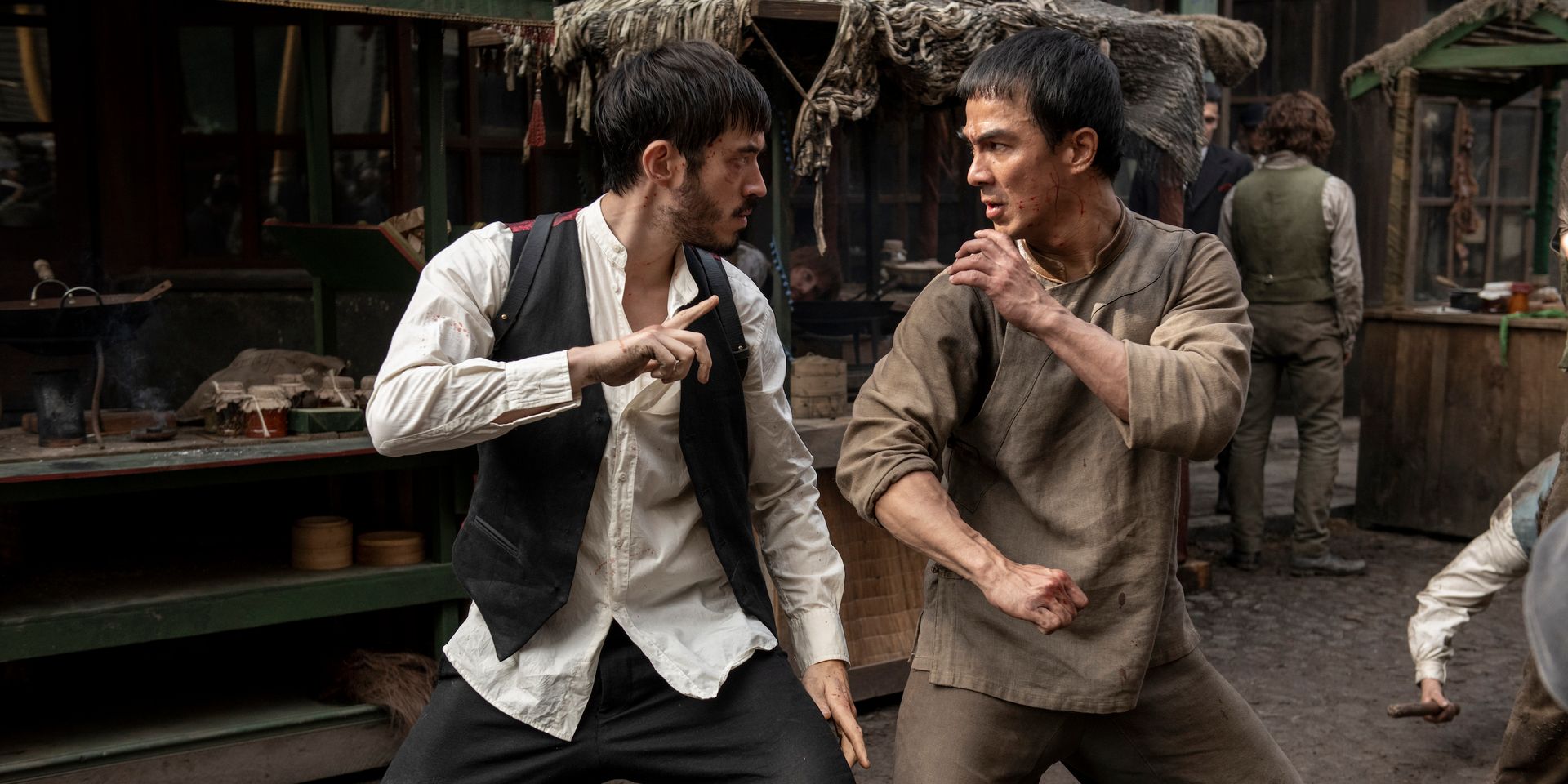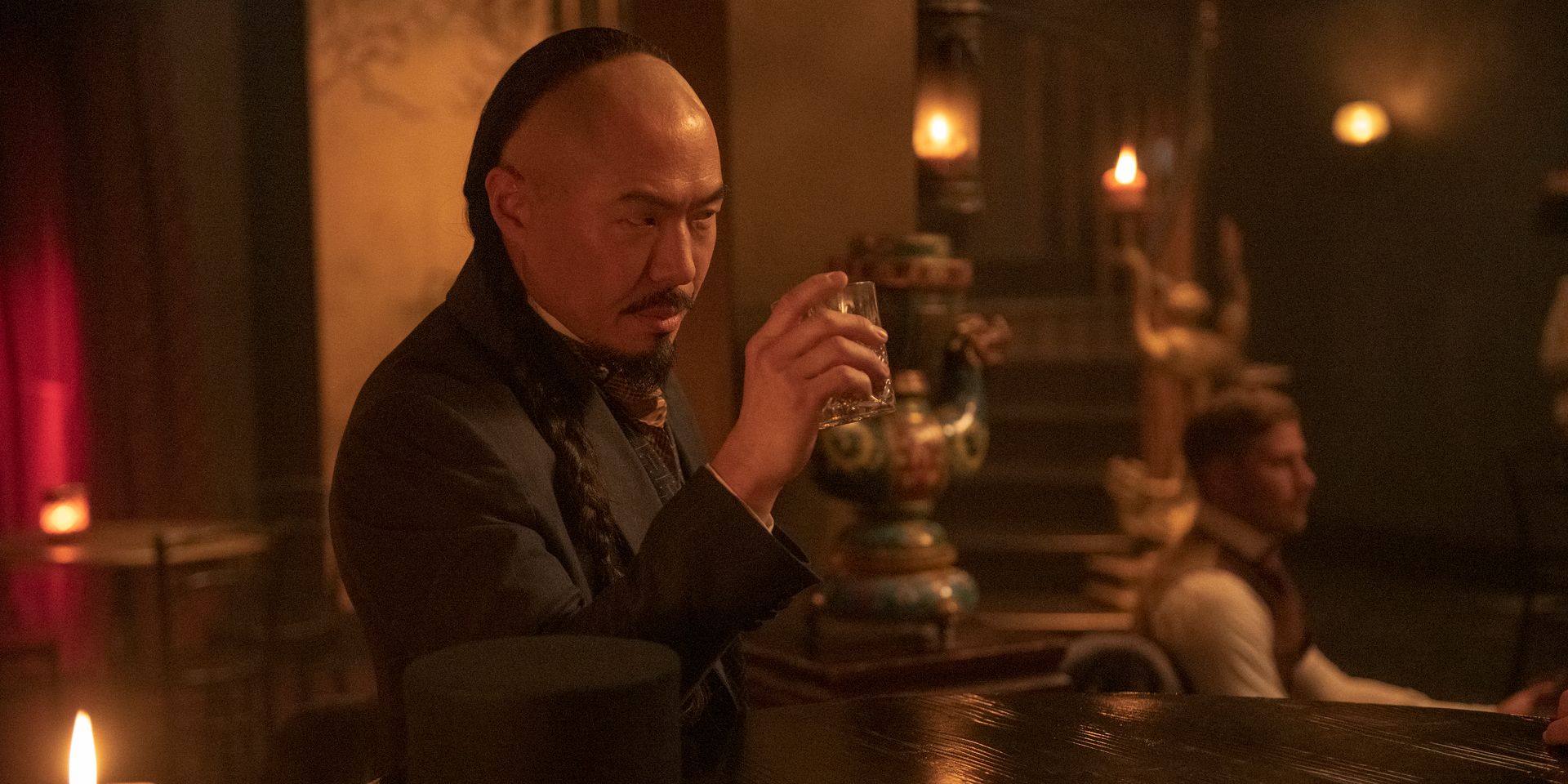From showrunner Jonathan Tropper and executive producers Shannon Lee (the daughter of Bruce Lee, who wrote the original treatment that inspired the series) and Justin Lin, the Cinemax drama series Warrior is an action-packed story set during the Tong Wars of San Francisco’s Chinatown in the late 19th century. The show follows martial arts prodigy Ah Sahm (Andrew Koji), who emigrated from China and is trying to find his place in a new country while making a name for himself, but quickly finds the bonds of family, both blood and chosen, pushed to the limits in this new world.
During this 1-on-1 phone interview with Collider, executive producer/writer Jonathan Tropper talked about what he set out to do with Season 2, delving deeper into the characters, not having the desire to make a popcorn show, telling a story populated by complicated people instead of good guys and bad guys, designing the fight sequences, why he never does a TV show without Hoon Lee, the fun of directing his own scripts, and whether a third season is possible. He also talked about how he feels about the story they told with Banshee, and whether Lucas Hood ever had a name.
COLLIDER: What did you set out wanting to do with Season 2 of Warrior that you couldn’t do with Season 1?
JONATHAN TROPPER: We spent Season 1 really stirring this pot to a simmer. You had all of the racial tensions between the Chinese immigrants and the white people. You had the tensions between the Irish laborers and Chinese labor. You had the tensions between the Tongs. You had the political tensions up in the halls of government that were affecting Chinatown. It was all being stirred into this simmering swirl of conflicting agendas. So, the idea for Season 2 was to let that boil over and explode. Season 2 is much more explosive than Season 1. Season 1 was about building all of that tension, and Season 2 was about somebody lighting the fuse. I just mixed a bunch of metaphors there.
With so many characters on this show, were there any specific characters that you were most interested in expanding on or delving deeper into?
TROPPER: I always tell myself when I’m in this mess that the next show is gonna just have three characters, and it just never works out that way for me. The way I write, I like to create characters in disparate worlds and create interconnections between all of them, so I always end up with way too many characters. Starting at the top, we had established a bunch of really interesting characters, but we had presented them all in service of building this complicated world. Now that the world was built, the idea was to just go deeper with all of them and find very surprising new angles and new insights into who they were, and that starts at the top with Ah Sahm. When Ah Sahm arrived, he was fresh off the boat and he was on his back foot for awhile in the first season. He was just trying to figure out who was an enemy and who was ally, and what he was supposed to do. He made a few missteps. It was about him just trying to find his place. Season 2 has a much more aggressive Ah Sahm. He almost got killed in that fight in Season 1, and he’s enraged that it was his sister who almost had him killed. Season 2 is the Ah Sahm we heard about from his sister in Season 1, who’s blind to the consequences and just rushing headstrong into battles. We took that approach with all of the characters and just went a little deeper with them. Penny Blake is another one, who was this rich housewife in Season 1 and now she’s taking over her father’s company and she’s becoming an aggressive businesswoman with a very different take on Chinese labor than she might’ve had last year. It was about taking each character and really plumbing their depths because we’ve already established them. That’s the fun of a Season 2. You get to just go much deeper and see what these characters have to offer.
Is it challenging to have all of these characters from the first season, and then bring in new characters to Season 2 and figure out how to work them in?
TROPPER: Well, the thing is that I could always use a few more episodes. We had 10 episodes, which is a nice amount of real estate. Could we have used 12? Absolutely. But we don’t just randomly introduce new characters. The new characters are largely introduced in a way that informs what’s already been built. We brought in the character of Nellie Davenport and that was not a random character. That was really about complicating Ah Toy’s life some more. One of the big things we’re dealing with is that Ah Toy has to start facing the existential questions of what it is she does for a living. So, Nellie was conceived as part of that storyline. Anyone who comes in, it’s not really a challenge to find time for them because they’ve been brought in with a very specific story already in mind.
What do you find most interesting about the contrast between Ah Toy and Nellie Davenport?
TROPPER: The most important thing about a show like Warrior is that there are no villains. There’s no good guys and bad guys. There are a lot of complicated people who are, to some extent, victims of the time period they’re in and accidents of birth. No one is really an enemy of anybody. Everybody has something to learn from the opposite side. Part of the fun of this show is that some of the most intimate relationships on this show are between adversaries. The two main adversaries are brother and sister. At first blush, Nellie seems to be somebody who’s totally at cross purposes with Ah Toy, but you get a few episodes in and you realize that Ah Toy may have needed someone like Nellie to come around and help her focus her own efforts and help her examine her own life more. These characters react the way humans do, in a very complex manner, not with specific vectors, but they bump into each other and both of them change.
I love Ah Toy. She’s such a great character, living this dual life between being a businesswoman and being a vigilante. What was that like to balance this season?
TROPPER: One of the main character arcs of the season is Ah Toy’s existential struggle with justifying the fact that she is in fact exploiting Chinese women. At the same time, she’s secretly acting as a champion of the Chinese immigrants. How does she reconcile those two sides of herself, and how does she rationalize the fact that she is basically sex trafficking? Her facing that fact and admitting it to herself is a big part of her journey in Season 2.
You really get to explore some deep ideas and subject matter on this show.
TROPPER: That was always the goal. I wasn’t interested in making a popcorn show. The more you read about this time period and the complexities of this time period, the more you wanna really explore that in a meaningful way. The challenge with Warrior has always been this sexy kung fu wrapper that’s wrapped around a very issues-oriented show.
What did you want to do with the journeys of both Ah Sahm and Mai Ling in Season 2?
TROPPER: The Ah Sahm/Mai Ling journey is a microcosm of the larger question of, “We’re both here and we’re both trying to survive a much larger opposing force from the outside, which is the racism coming from the white community. We are very vulnerable here and the irony of not being able to stand united, but to actually be fighting each other, when in fact the real threat is out there,” is an allegory for what the whole Tong War period was, which was the infighting within the Chinese gangs. In fact, the greater enemy was surrounding them and was gonna outlast all of the Tongs.
What was the hardest aspect of making the first season of the show, and did accomplishing it make Season 2 any easier?
TROPPER: I don’t really know. I’m sure, at the time, it felt really difficult, but had a really great team. We had a fantastic stunt team, in terms of training and developing the martial arts sequences. What’s hard about the show is creating a believable Chinatown world on the continent that has fewer Asians than anywhere else on the planet. That was tricky. The challenge was to create a world that felt heightened and that didn’t feel like a docu-drama, but at the same time, delivered the same emotional punch that a true life story would deliver. It was creating that hybrid of a graphic novel television show that still has the emotional honesty of a docu-drama.
After setting a certain expectation with the first season, how did you want to push yourself even further for the second season? Does that reflect itself in the fight scenes, or are there other ways you wanted to make the scope feel even bigger?
TROPPER: We definitely want to keep expanding the world. In terms of visually, between Season 1 and Season 2, we actually added onto our Chinatown backlot. We built more streets and more areas. At the same time, we took our characters out of Chinatown. We had Ah Toy go to Sonoma County, seeing the vineyards and the large unspoiled part of California, and leaving the grind of Chinatown. We had Ah Sahm and Young Jun traveling to the Mexican border and seeing what’s happening there as a really interesting parallel to their own journey as aliens. We just want to continue to take you to unexpected places, both within the world and outside of it.
When you do the show that has so much action and so many fight scenes, is there a challenge to keeping them always feeling new and fresh and interesting?
TROPPER: Yeah. It’s less about being flying kicks, jumping kicks, and wire work. What’s most important is that the fights have to be an expression of the character. Fights have to tell a story. We never want to descend into a show that’s using sets as an excuse to find places to stage your fights. The fights have to really be earned and they have to actually move the story forward. What we became really good at was making sure there was no gratuitous fighting and that whenever the fighting happened, that it serviced the plot and the characters. We tried to make sure that it was all done in service of the larger storytelling.
The fight scenes on this show are truly impressive.
TROPPER: Our fight coordinators, Brett Chan and Johnny Yang, were born to do this show. We brought them in and they immediately understood the tone and the nature of the show, and the fact that we didn’t want wire work, we didn’t want Crouching Tiger, Hidden Dragon, and we didn’t want [a] video game type of fighting. We wanted a very consequential martial arts, where hits hurt and people suffer the pain. It had to be very bone-jarring, it had to feel violent, it had to feel messy, and it had to feel painful. At the same time, we wanted to capture the beauty of kung fu. Those guys understood it from day one, and really elevated the whole game.
Because Warrior is often such a highly intense series, do you ever find yourself having to force yourself to give the characters a breather and allow them to just take a moment?
TROPPER: I did that very consciously, in both seasons, and it’s something that I did on Banshee too. You get to the midpoint of the season, like Episode 5 or 6, and we’ll do an episode that takes you to a completely different place or in a completely different direction. We’ll do something just to give the viewers a chance to clean their palate and give the characters a chance to step out of the craziness. In Season 1, we did that Western episode, and in Season 2, we did the episode in a Mexican border town. Those were not by accident. They were both designed to be palate cleansers before we go into the building climax of the season.
Dustin Nguyen’s character has been a real wild card. What do you think he brings to the show, as a character and as an actor?
TROPPER: We have two Tongs, but it’s a brother and a sister, and there’s a certain level of civility to both of them. We wanted a spoiler in there. We wanted somebody who doesn’t play by either of their rules and who’s almost a common enemy that helps ratchet up the tension between the two big Tongs. This third Tong is a much more savage and cruel Tong that seems to be something that should just be an afterthought, but is in fact really dangerous to both of them. So, the notion that Dustin’s character will come in and screw up everybody’s best laid plan because he’s so uncontrollable and unpredictable, it just felt like a great spoiler.
I loved Hoon Lee in Banshee and I love him on Warrior. As the most mysterious character on this show, do you feel like we’ll have a better sense of what drives Wang Chao by the end of Season 2?
TROPPER: Yeah. It would have been really easy to just keep Wang Chao as a character floating above the fray and keep him mysterious. I never do a show without Hoon. He’s my good luck charm. He’s such a multi-faceted actor that I wasn’t gonna lose the opportunity to go deeper into who Wang Chao is. Hoon actually contributed a little bit to the story of where Wang Chao comes from and how he came to be who he is. It was actually a real pleasure to show you some of the pain he’s suffering and that he’s not just this artful dodger in Chinatown, but he has his own agenda, his own secrets, and his own pain and suffering that mark who he is.
Reflecting back on Banshee as a whole, how do you feel about the series? Do you feel like you told the story you wanted to tell, or do you ever wish that you’d gone another season?
TROPPER: No. Actually, we decided to end it at Season 4 because we felt the story was over. I was very worried that, if we stuck around, we would end up in trouble. We had a very clear arc for Lucas Hood and for Carrie, and we had reached the end of it. Trying to stretch it out for another 10 episodes, I just felt that it was gonna start to feel empty and it was gonna start to feel contrived. We had a very rabid fan base, and there’s two sides to that coin. One side is that they really would love another season. And the other side is that, if that season doesn’t measure up, they will bury you. I did not feel creatively that we had another season to do. Now that time has passed, there’s always a chance to say, “Hey, I would love to revisit these characters and see where they are, years later, and tell a new story.” But the story we were telling of the show Banshee was over.
You never revealed the name of the character that became Lucas Hood. Did you ever come close, at any point, to having a scene where you did reveal it?
TROPPER: It’s Marcus Schwartz. Not really. No, we never wanted to reveal his name. We played a little game in one of the episodes, but he’s the man with no name. We were very inspired, in the creation of this show, by guys like Clint Eastwood riding in on his mule in A Fistful of Dollars and you never learned his name. His name wouldn’t have meant anything. It only would have been disappointing, no matter what it was. I was never tempted to even figure out what his name is.
How did directing an episode of Warrior compare to directing an episode of Banshee?
TROPPER: I’ve never directed anyone else’s work and I’ve never directed a pilot, so for me, directing is just an extension of the writing. I write it with intention and I want to deliver that intention. The hard part about TV is that when you live the script for so long, and then you hand it off for someone else to direct it, it’s never gonna be directed exactly as you intended. So, it’s always fun to get in there and do one where you direct it exactly as you intended. By the time I did it in Season 2 of Warrior, I’d spent 10 episodes showrunning it already and I knew exactly how the show works, how we shot it, and how we edited it. In a sense it’s cheating, because to direct something that you’ve already edited, you know what to use and what not to use, and you know what shots work and don’t work. You can just really just worry about the character and the performance, and it’s pretty effortless. I think I’d have a much harder time directing somebody else’s work.
Would you also like to direct a feature film at some point?
TROPPER: Yeah, of course. I have a script that I’m working on putting together to direct. It’s a small movie based on one of my books that I’d like to direct. And there’s another show that I’ve been toying around with that I would want to write and direct all the episodes of. Neither of those are up on their feet yet, so right now, I’m just working as a showrunner.
The thought of directing an entire season of something seems very daunting.
TROPPER: Not when it’s like something that you know really well and it’s something that you’ve written. Then, it’s just a matter of logistics, but it’s not terribly daunting. If you do eight half-hours, it’s not that bad.
Is there any chance that we’ll get a Season 3 of this show? Is there any world where you’ll be able to finish telling the story that you want to tell?
TROPPER: What’s great is that we live in a world now where that’s infinitely more possible than it used to be. I know the cast is willing. I know the writers and producers are willing. Right now, the problem is that we lost our home. Cinemax isn’t making new shows anymore. The HBO side of the business isn’t dying to pick up a show two seasons in and have to give birth to it again. I don’t know. We all talk about it. We would love to put it back together. I don’t think it would be that hard to put back together, but we need a patron. We need HBO to wanna do it. At this point, those talks aren’t really happening because people have moved on to other projects and it would take some doing to put it back together. But I certainly wouldn’t be averse to it.
Warrior airs on Friday nights on Cinemax.

